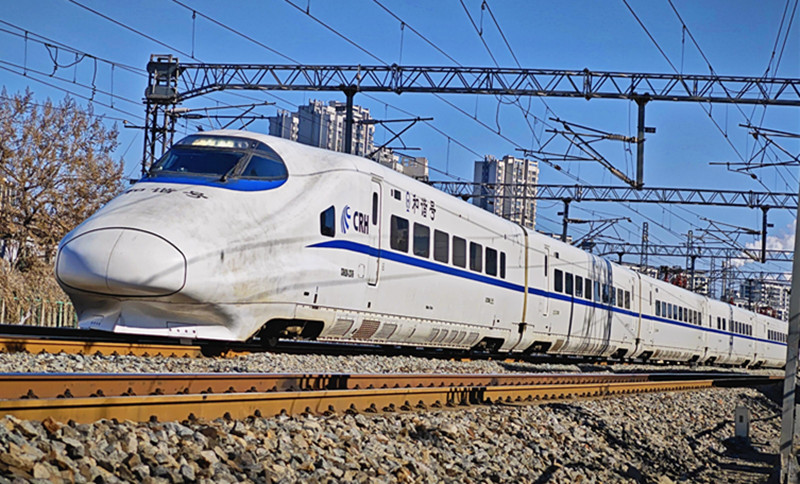Aluminum Materials in Rail Transportation

In the rail transportation industry, aluminum materials are highly valued for their lightweight, corrosion resistance, and high strength properties. With the advancement of technology, a growing number of high-performance aluminum alloys have been introduced to meet the high demands for safety, strength, durability, and weight reduction. This article will discuss various common aluminum alloys and their applications in rail transportation, as well as how high-performance aluminum alloys are driving the development of rail transportation technology.
Common Aluminum Alloys in Rail Transportation
1. 6000 Series Aluminum Alloys (e.g., 6061, 6082)
The 6000 series aluminum alloys are among the most commonly used materials in rail transportation. These alloys are widely applied in the manufacturing of car bodies, car frames, and other structural components due to their excellent welding properties, formability, and corrosion resistance.
Applications: Car body frames, doors, cabin interiors, supporting structures, etc.
Advantages: With high strength, especially in the case of 6061 aluminum alloy, it offers excellent machinability and formability, meeting the structural and weight requirements of rail transportation. It also provides good corrosion resistance, making it suitable for various environmental conditions and long-term use.
2. 2024 Aluminum Alloy
2024 aluminum alloy is known for its high strength and excellent fatigue resistance, making it a preferred choice for high-strength components in rail transportation systems. It is especially suited for parts that require high tensile strength, though it has relatively poor corrosion resistance and typically requires surface treatment to enhance its durability.
Applications: Structural components, car bridges, car frames, etc.
Advantages: Offers high strength and excellent fatigue resistance, making it suitable for long-term use. Its corrosion resistance is weaker compared to other alloys, but surface treatments such as anodizing can significantly improve its durability.
3. 3000 Series Aluminum Alloys (e.g., 3003, 3105)
The 3000 series aluminum alloys are mainly used for lightweight structures and interior components, offering good corrosion resistance and workability. These alloys are commonly used in the design of rail transportation interiors.
Applications: Interior panels, doors, trim, etc.
Advantages: Known for strong corrosion resistance and good workability, they are ideal for parts that require high surface quality.
4. Aluminum Alloy Track Materials
Aluminum alloy track materials are primarily used in light rail and maglev train systems. Compared to traditional steel rails, aluminum alloy rails are much lighter, which helps reduce energy consumption and maintenance costs for trains.
Applications: Light rail tracks, maglev train tracks, etc.
Advantages: Aluminum alloy rails reduce train weight, increase energy efficiency, and improve the corrosion resistance of the tracks, extending their service life.

High-Performance Aluminum Alloys in Rail Transportation
As the demand for lightweight, high-strength, corrosion-resistant, and safe materials in rail transportation grows, high-performance aluminum alloys have become increasingly important. These alloys provide superior performance and are used in more advanced applications within rail transportation.
1. 7075 and 7050 High-Strength Aluminum Alloys
7075 and 7050 aluminum alloys are high-strength alloys widely used in rail transportation for parts that need to bear heavy loads, high dynamic pressure, and endure harsh environmental conditions.
Applications: Car bridges, wheel axles, load-bearing components, etc.
Advantages:
7075 Aluminum Alloy: Known for its strength, which is close to that of steel, it is suitable for high-load and high-pressure components. While it has relatively poor corrosion resistance, surface treatments can significantly enhance its durability and performance in demanding environments.
7050 Aluminum Alloy: Superior in corrosion resistance compared to 7075, 7050 is ideal for parts exposed to high-stress corrosion environments. It excels in rail transportation applications where the materials are subjected to long-term exposure to harsh conditions.
2. Aluminum-Lithium Alloys
Aluminum-lithium alloys are emerging as high-performance materials due to their remarkable lightweight properties. These alloys have already been successfully used in the aerospace industry and are expected to find widespread applications in rail transportation, especially for high-speed trains and advanced rail systems.
Applications: High-speed train bodies, frames, supporting structures, etc.
Advantages: With a lower density and higher strength, aluminum-lithium alloys significantly reduce the overall weight of rail transportation, improving energy efficiency. Their excellent fatigue resistance and corrosion resistance make them ideal for key components in advanced rail transportation systems.
3. High-Performance Versions of 7075 Aluminum Alloy
7075 aluminum alloy is widely used for heavy-duty components in rail transportation systems, particularly in parts that need to support high loads. The high-performance versions of 7075, which undergo special surface treatments, offer improved corrosion resistance and durability.
Applications: High-end train bridges, wheel axles, load-bearing components, etc.
Advantages: After surface treatment, 7075 aluminum alloy offers enhanced corrosion resistance while maintaining its high strength and light weight, making it ideal for use in high-load, high-strength applications in rail systems.
4. 7050 Aluminum Alloy Applications
7050 aluminum alloy is primarily used in high-strength components exposed to severe environmental conditions. It performs exceptionally well in environments where high-stress corrosion is a concern, making it ideal for demanding applications in rail transportation.
Applications: Train frames, supporting structures, load-bearing components, etc.
Advantages: 7050 aluminum alloy offers superior corrosion resistance compared to 7075, making it suitable for parts exposed to harsh conditions over long periods. It performs excellently in high-stress and high-strength environments.
Conclusion
With the increasing demands for lightweight, high-strength, corrosion-resistant, and safe materials in rail transportation, high-performance aluminum alloys have become essential. Alloys like 7075, 7050, and aluminum-lithium alloys provide superior performance and lightweight advantages, not only improving the operational efficiency of rail transportation but also reducing energy consumption and maintenance costs. As aluminum alloy technology continues to advance, more high-performance materials will likely enter the rail transportation industry, providing stronger technical support for the sector's future development.